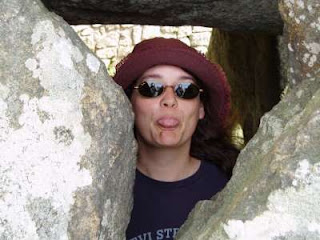Jumping (Squeeze Games) was one of the final course 3 topics and covers all squeeze games like swimming, trailer loading, saddling, even riding (the ultimate squeeze game), so if you're thinking "I don't want to jump, so this is relevant to me" then you're wrong - this information relates to all squeeze games.
The squeeze game has two primary purposes; the first is to encourage confidence in all zones both under and over the horse and to shorten the horse's flight line. Most problems people experiencing jumping are also issues they have with other squeezes, like running out, going too fast, plowing through or over-jumping. All these problems can be solved easily by the phrase "It's not about the jump - it's about the psychology" - so it appears we have come full circle, back to course 1!
Very interesting quote (attributed to Albert Einstein) that I think applies to most of us: "Insanity is doing something that doesn't work repeatedly and expecting the result to change!" How often do we do this with our horses?!?
We saw two clips of top level riders show jumping - one was a happy horse over fences, but very unhappy between them when the rider started to get in the horse's way and over used tools to force things. The other was a happy partnership where the rider stayed out of the way and gently guided, leaving the horse to do it's job - both horse and rider seemed a lot happier this way.
One of Pat Parelli's favourite sayings is "Ride dressage and show jumping like you have never seen a traditional partnership". This is because most 'normal' partnerships are of the first type described above, to varying degrees.
Back to jumping then. Basically the rider needs to let the horse do his responsibilities and stay out of the way. The best way to do this is to assume the pushing position and to ensure you zig and zag when the horse zigs and zags!
Start jumping on the ground, ensuring the horse can jump confidently, with rhythm and relaxation, in all gaits, asking for higher than what you will ask when mounted - warm up strong, to ride soft. Then after all the safety checks, mount and walk the jumps - walking enables you to notice feedback, even the subtle things - ensure confidence in the walk before moving on to the trot, and so on.
The last topic of the course then was Flying Lead Changes. In level two these are achieved by going fast enough and changing direction that the horse picks up the alternative lead. The old level 3 method of canter half pass, change of bend then new lead is no longer taught as this can be achieved with the horse on the forehand, so this lesson was all about the new technique! Oooohhhhh!
Now there are a few prerequisites before attempting Flying Lead Changes and unfortunately there are quite a few of them - confidence, impulsion, movable ribs, good simple changes, respectful partnership, good sideways and backwards games, control and good leadership - basically levels 1 and 2 completed and started level 3!
There are four rungs to the Flying Lead Changes ladder and they are:
- Transitions using Suspension Rein - walk - canter - walk (3-7 strides)
- Swinging Shoulders
- Serpentine Patterns - walk at change of bend on deep loops getting shallower
- Flying Changes - just skip the walk!
We then watched a video of Linda Parelli demonstrating the four ladder rungs on Remmer! This was probably my favourite video of the whole 3 courses! It was fantastic! She added the following comments for the ladder rungs:
- Transitions will help to encourage the correct shape and balance.
- This maneuver is helped by using the outside thigh.
- Take your serpentine more and more shallow until it is virtually a straight line.
- Initially the 'walk' phase may be replaced by a 'slip change' - this will go.

No comments:
Post a Comment